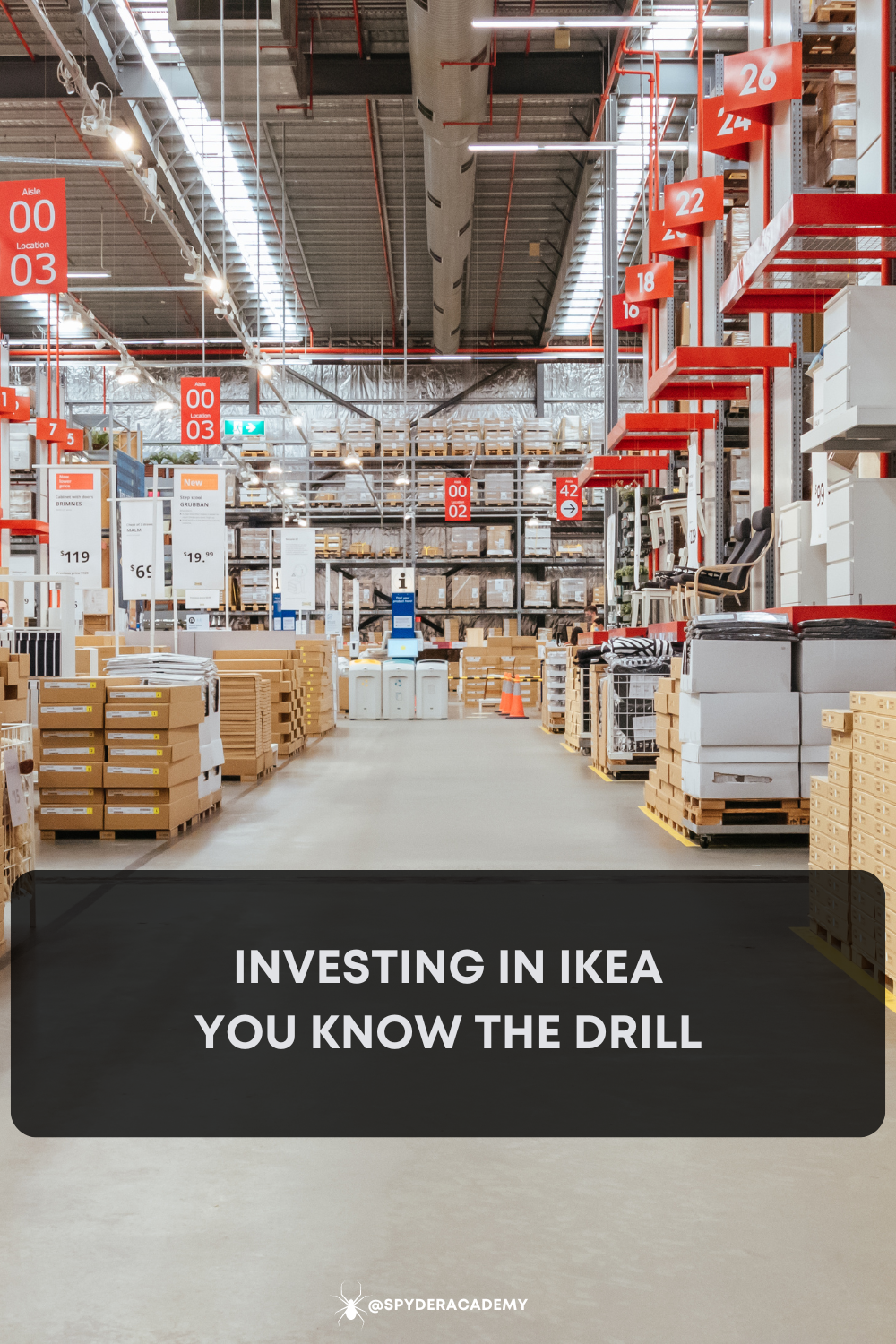Want to Invest in IKEA? Here’s How (Without Buying a Billy Bookcase)
IKEA. You know the drill: flat-pack furniture, Swedish meatballs, and that magical mix of frustration and satisfaction that comes with assembling a Kallax shelf unit. But what if you want to invest in this retail juggernaut, instead of just buying their products?
Hold your horses, savvy investor! IKEA isn’t publicly traded, so you can’t just buy shares like you would with Apple or Amazon. But fear not, there are some clever ways to get a piece of the blue-and-yellow action.
IKEA’s Winning Formula (Hint: It’s Not Just the Meatballs)
IKEA’s success story isn’t a coincidence. They’ve got a business model that’s as well-designed as their furniture.
- Retail Rockstar: IKEA isn’t just selling furniture; it’s selling an experience. Affordable, stylish, and functional furniture that’s just begging to be assembled (and re-assembled).
- Supply Chain Symphony: They’re in control from design to delivery, which means they can keep costs low and quality high. Like a well-oiled machine.
- Money Makers: It’s not just furniture. IKEA’s got those irresistible Swedish meatballs, along with a whole bunch of home goods and lighting. Talk about a diversified portfolio!
- Customer Love: The showroom experience is key. It’s like a giant playground for adults, where you can visualize your furniture dreams. And that self-assembly? It’s a whole lot cheaper than hiring a professional.
The IKEA Investment Playbook: Where to Put Your Money
1. The Property Game: IKEA’s Real Estate Strategy
IKEA has a knack for picking prime real estate. Think those massive stores in bustling urban areas and suburban shopping centers. High traffic, easy access – they’ve got it figured out.
- REITs (Real Estate Investment Trusts): These allow you to invest in a portfolio of commercial properties, including those where IKEA calls home. Think of it as owning a little piece of the IKEA empire.
- Direct Property Investment: For the bold and the well-funded, there’s always the option of buying an IKEA-owned or leased property directly. But this requires a serious dose of experience in the commercial real estate world.
2. Indirect Investment: Supporting the IKEA Ecosystem
IKEA relies on a whole network of companies to keep things running smoothly. Investing in these suppliers can give you indirect exposure to IKEA’s success.
- Logistics: These companies handle the transportation, warehousing, and distribution of all those flat-pack boxes. Think of them as the logistical muscle behind IKEA’s global reach.
- Manufacturing: From wood products to textiles, these companies produce the components that make up IKEA’s furniture. They’re the backbone of the furniture-making process.
- Design: IKEA’s iconic designs aren’t just born out of thin air. Companies specializing in furniture design, ergonomics, and product development play a key role in shaping IKEA’s product offerings.
3. The Brand Licensing & Franchising Game: Owning a Piece of the IKEA Experience
IKEA operates on a unique franchising model. They design and manufacture, and the franchisees handle the day-to-day operations of the stores.
- Franchise Opportunities: If you’ve got a knack for retail and a hefty bank account, you might be able to snag a franchise opportunity and become an IKEA store owner. But be warned, the competition is fierce and IKEA has high standards.
Reasons to Be Bullish on IKEA (Beyond the Swedish Meatballs):
- Global Domination: IKEA is expanding like crazy, conquering new markets and bringing its affordability and style to the world. Think emerging markets, think growth!
- Brand Loyalty: People love IKEA. It’s like a cult following. That means steady demand and a loyal customer base.
- Sustainability: IKEA is making serious efforts to be more eco-friendly, using sustainable materials and reducing its environmental impact. It’s a good look, and it’s resonating with consumers.
- E-commerce Domination: IKEA is catching up in the online world, making it easier than ever to shop for their products. More online shoppers, more sales, more potential for growth.
- Innovation: IKEA is constantly evolving, coming up with new designs, new services, and new ways to keep the customer experience fresh. It’s a company that’s not afraid to change with the times.
Reasons to Be Bearish on IKEA (Yes, Even the Best Have Flaws):
- Competition: The furniture market is crowded, and everyone wants a piece of the pie. IKEA has to keep innovating and finding new ways to stand out.
- Economic Downturns: When times get tough, people often cut back on discretionary spending like furniture. IKEA is not immune to these economic headwinds.
- Supply Chain Issues: Global supply chains can be fragile, and disruptions can happen. Pandemics, geopolitical events, natural disasters – they can all impact IKEA’s ability to get products to customers.
- Environmental Concerns: The environmental impact of furniture production is a growing concern. IKEA could face stricter regulations and scrutiny, potentially affecting its costs and operations.
The Bottom Line: Invest Wisely
Investing in IKEA is possible, but it requires a bit of creativity and a willingness to think outside the box. Whether you’re looking at real estate, indirect investments, or even franchising, make sure to do your research and consider all the risks before taking the plunge.
Remember, this is not financial advice. Always consult with a qualified financial professional before making any investment decisions. You wouldn’t build a Kallax shelf without instructions, right? The same goes for your investments!

